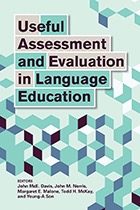assessment
Select an item by clicking its checkbox
In remote teaching we all wrestle with how to effectively translate our typical assessments of student learning, and possibly, how to create new assessments. This requires (re)determining what we most want our students to achieve and thinking creatively about how they can best demonstrate their learning in an online ...
What simple gestures and accommodations at the end of a semester can lighten the load without compromising teaching and learning? Educators expect waning energy as a semester and academic year conclude. Students are overwhelmed trying to finish overdue assignments, final projects, and exams. Faculty are at the breaking point with ...
Without fail, every recent conversation that even remotely touches upon assessment leads to an increasingly intricate and technical discussion about how to prevent the cheating, presumed to be rampant, now that we’re all online. Should we use Lockdown Browser? Should we enable webcams? But what about smart phones? What ...
Date Reviewed: April 15, 2020
This book is a collection of fourteen essays representing presentations made at the 2016 Georgetown University Round Table (GURT) conference, sponsored by the Georgetown University Department of Linguistics and the Assessment and Evaluation Language Resource Center (AELRC). These essays showcase a diverse set of ap-proaches to treating assessment and evaluation as “tools of educational transformation” for foreign-language learning (vii). They focus on primary, secondary, and undergraduate-level foreign language instruction, with none concentrating specifically on graduate-level theological education or religious studies. Nonetheless, the volume offers some novel proposals for structuring language courses that may benefit biblical or modern language sequences offered in theological schools and religious studies pro-grams. The book is organized into three sections, each representing emerging research and praxis on transformative foreign language assessment and evaluation for e-learning platforms, language course instruction, program development, and ESL student placement.
Part one—Connecting Assessment, Learners, and Learning—surveys theories and practical implementations of assessment and evaluation for enhancing language learning, particularly from the perspective of student and teacher self-assessment processes. In five essays, this section establishes self-assessment as a continual process and offers practical steps for integrating self-assessment in foreign language acquisition.
Part two—Innovating, Framing, and Exploring Assessment in Language Education—covers topics such as the formative use of task-based assessment “in primary schools, the implementation of technology-mediated speaking performance assessment, and validation of educational placement decisions for immigrant learners” (ix). Some of the proposals may provide seminaries and graduate-level liberal arts programs fresh avenues for (1) going about its sequence of biblical language instruction or (2) resourcing multilingual students navigating North American theological and religious education.
Part three—Validity Evaluation—includes five essays that address processes for assessment validation, such as corroborating the outcomes of university entrance exams or language placement exams with student achievement and retention. These essays provide suggestions for the evaluation of overall language programs implemented by institutions. As a whole, it may supply new considerations about evaluating outcomes of language instruction for theological ESL programs.
The perspectives offered in this volume present innovative research on foreign language learning from outside the academic contexts of theological education and religious studies. As a result, they reflect fresh theoretical and practical considerations that may not have, as of yet, permeated conventional resources and “common knowledge” about assessment and evaluation in theological education. While it may prove to be a beneficial read, those primarily located in theological education and religious studies who grapple with issues of language instruction—especially biblical language instruction or the implementation of theological ESL programs—may still find this a challenging read. While the scholarship is relevant at times, its application is left to the reader from theological education and religious studies to make. Despite this potential difficulty, the volume represents the kinds of knowledge and resources available to theological education and religious studies from other educational stages and learning environments that may be further along in considerations about institutional learning processes, e-learning pedagogy, foreign language classroom instruction, and support of multilingual, international students.
One of the major advantages of the online learning environment is the capacity to help students develop critical thinking in more effective and efficient ways than the classroom environment allows. Emphasizing student engagement through online discussion forums is a powerful way to cultivate critical thinking. By having students engage more ...




